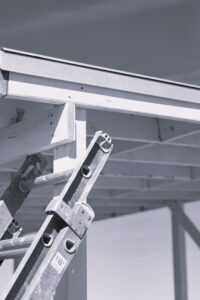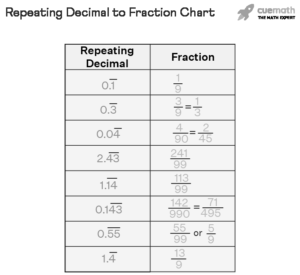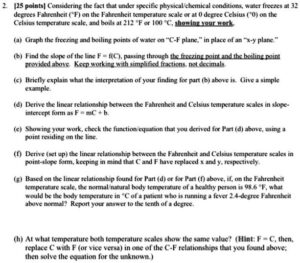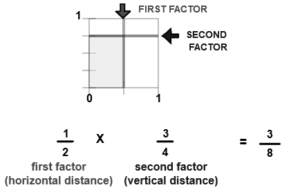Portable Ladders
Construction
Ladders shall be capable of supporting the following loads without failure:
Each portable ladder: At least four times the maximum intended load, except that each extra-heavy-duty type 1A metal or plastic ladder shall sustain at least 3.3 times the maximum intended load.
Ladder rungs, cleats, and steps shall be parallel, level, and uniformly spaces when the ladder is in position for use.
Rung Spacing
Rungs, cleats, and steps of portable ladders shall be spaced not less that 10 inches apart, nor more than 14 inches apart, as measured between center lines of the rungs, cleats, and steps.
Rungs, cleats, and steps of step stools shall be not less than 8 inches apart.
Rungs, cleats, and steps of the base section of extension trestle ladders shall be not less than 8 inches apart nor more than 18 inches apart.
Rung Width
The minimum clear distance between side rails for all portable ladders shall be 11 1/2 inches.
The rungs and steps of portable metal ladders shall be corrugated, knurled, dimpled, coated with skid-resistant material, or otherwise treated to minimize slipping.
A metal spreader of locking device shall be provided on each stepladder to hold the front and back sections in an open position when the ladder is being used.
Ladder components shall be surfaced so as to prevent injury to an employee from punctures or lacerations, and to prevent snagging of clothing.
Wood ladders shall not be coated with any opaque covering, except for identification or warning labels which may be placed on one face only of a side rail.
Use
Ladders shall not be tied or fastened together to provide longer sections unless they are specifically designed for such use.
When portable ladders are used for access to an upper landing surface, the ladder side rails shall extend at least 3 feet above the upper landing surface to which the ladder is use to gain access.
Ladders shall be maintained free of oil, grease, and other slipping hazards.
Ladders shall not be loaded beyond the maximum intended load for which they were built, nor beyond their manufacturer’s rated capacity.
Ladders shall be used only for the purpose for which they were designed.
Non-self-supporting ladders shall be used at an angle such that the horizontal distance from the top support to the foot of the ladder is approximately one-quarter of the working length of the ladder (the distance along the ladder between the foot and the top support).
Ladders shall be used only on stable and level surfaces unless secured to prevent accidental displacement.
Ladders shall not be used on slippery surfaces unless secured or provided with slip-resistant feet to prevent accidental displacement. Slip-resistant feed shall not be used as a substitute for care in placing, lashing, or holding a ladder that is used upon slippery surfaces including, but not limited to, flat metal or concrete surfaces that are constructed so they cannot be prevented from becoming slippery.
Ladders placed in any location where they can be displaced by workplace activities or traffic, such as in passageways, doorways, or driveways, shall be secured to prevent accidental displacement, or a barricade shall be use to keep the activities or traffic away from the ladder.
The area around the top and bottom of the ladder shall be kept clear.
The top of a non-self supporting ladder shall be placed with the two rails supported equally unless it is equipped with a single support attachment.
Ladders shall not be moved, shifted, or extended while occupied.
Ladders shall have nonconductive siderails if they are used where the employee or the ladder could contact exposed energized equipment.
The top or top step of a stepladder shall not be used as a step.
Cross-bracing on the rear section of stepladders shall not be used for climbing unless the ladders are designed and provided with steps for climbing on both front and rear sections.
Ladders shall be inspected by a competent person for visible defects on a periodic basis and after any occurrence that could affect their safe use.
Portable ladders with structural defects, such as, but not limited to, broken or missing rungs, cleats or steps, broken or split rails, corroded components, or other faulty or defective components, shall either be immediately marked in a manner that readily identifies them as defective, or be tagged with “Do Not Use” or similar language, and shall be withdrawn from service until repaired.
Ladder repairs shall restore the ladder to a condition meeting its original design criteria, before the ladder is returned to use.
When ascending or descending a ladder, the user shall face the ladder.
Each employee shall use at least one hand to grasp the ladder when progressing up and/or down the ladder.
An employee shall not carry an object or load that could cause the employee to lose balance and fall.
OSHA Definitions
“Portable ladder” means a ladder that can be readily moved or carried.
“Extension trestle ladder” means a self-supporting portable ladder, adjustable in length consisting of a trestle ladder base and a vertically adjustable extension section, with a suitable means for locking the ladders together.
“Step stool (ladder type)” means a self-supporting, foldable, portable ladder, nonadjustable in length, 32 inches or less in overall size, with flat steps and without a pail shelf, designed to be climbed on the ladder top cap as well as all steps. The side rails may continue above the top cap.
“Competent person” means one who is capable of identifying existing and predictable hazards in the surroundings or working conditions which are unsanitary, hazardous, or dangerous to employees, and who has authorization to take prompt corrective measures to eliminate them.
Disclaimer: The information presented on this page is taken from the Occupational Safety and Health Administration Regulations (Standards – 29 CFR) 1026.105 – Ladders. The presentation and use of this material is not intended to be an interpretation of those regulations. Please refer to the Regulations for the full text and interpretation of the Regulations and Standards.
What are three main types of portable ladders?
There are three main types of portable ladders: stepladders, extension ladders, and combination ladders.
Stepladders are the most common type of ladder. They are portable, lightweight, and easy to use. Stepladders have a fixed height and are available in a variety of sizes.
Extension ladders are ladders that can be extended to reach a higher height. They are more versatile than stepladders and can be used for a variety of tasks. Extension ladders are available in a variety of sizes and can be extended to different heights.
Combination ladders are ladders that can be used as both stepladders and extension ladders. They are the most versatile type of ladder and are available in a variety of sizes. Combination ladders can be used for a variety of tasks and can be extended to different heights.
What are OSHA regulations concerning portable ladders?
Ladders are an important part of many work sites, but they can also be dangerous. That’s why there are strict OSHA regulations concerning portable ladders. These regulations are designed to keep workers safe and to prevent accidents.
Here are some of the key OSHA regulations concerning portable ladders:
-Ladders must be inspected before each use.
-Ladders must be kept free of oil, grease, and other slippery substances.
-Ladders must be used only for their intended purpose.
-Ladders must be placed on a firm, level surface before use.
-Ladders must be secured to prevent them from slipping or being knocked over.
-Ladders must be used at a safe angle, with the base of the ladder being 1 foot away from the wall for every 4 feet of height.
-Ladders must not be overloaded.
-Only one person should be on a ladder at a time.
-Workers should not stand on the top rung of a ladder.
-Ladders should be equipped with non-slip feet and safety devices to prevent them from slipping or tipping over.
By following these OSHA regulations, you can help keep yourself and your coworkers safe while using portable ladders. Check OSHA’s website for more information on ladder safety.
What are the two types of portable ladders?
Do portable ladders need to be tied off?
How high can you climb a portable ladder without fall protection?
When it comes to working at heights, safety is always the number one priority. But what happens when you don’t have access to fall protection? In this blog post, we’ll be discussing how high you can climb a portable ladder without fall protection.
Portable ladders are a common sight on construction sites and are often used for tasks such as painting or cleaning. They’re easy to set up and take down, which makes them a convenient option for many workers.
But how high can you safely climb a portable ladder without fall protection?
The answer depends on a few factors, including the type of ladder you’re using and the conditions of the work site.
For example, if you’re using an A-frame ladder, the maximum safe height is usually around 6 feet. But if the ladder is being used on uneven ground, the safe height may be lower.
If you’re using a stepladder, the maximum safe height is usually around 10 feet. Again, this may be lower if the ground is uneven.
It’s important to always err on the side of caution when working at heights. If you’re unsure about the safe height for your ladder, ask a supervisor or safety professional.
And remember, always take the time to set up your ladder correctly before climbing. It’s not worth risking your safety for a few extra minutes of work.
How do you stop a portable ladder from slipping sideways?
When you’re using a portable ladder, it’s important to make sure that it doesn’t slip sideways. Here are a few tips to help you keep your ladder stable:
– Use a ladder stabilizer. This is a device that you can attach to the top of your ladder to help keep it from slipping.
– Place your ladder on a firm, level surface. If the ground is uneven, use something to level it out before setting up your ladder.
– Make sure the shoes of your ladder are clean and free of debris. This will help to create a more stable base.
– If you’re using the ladder outdoors, stake it down. This will help to keep it from moving around in windy conditions.
By following these tips, you can help to keep your ladder stable and prevent it from slipping sideways.
Conclusion
We hope this blog post “Portable Ladders?” has helped clear up any confusion you may have had. If you have any further questions, feel free to reach out to us and we would be happy to help!
Hey, check out: Concentric Bends
Today sponsors are Localhandymantulsa.com , Sprinkler Repair Long Island , Mailboxrepairtulsa.com , Chestercountytowingservices.com and Huttotxroofrepair.com. Always providing the best services in town.









